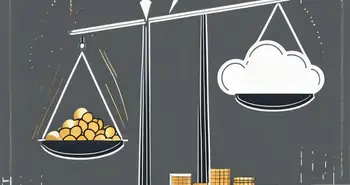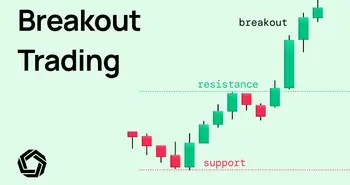Staking on Morpher: Earn 11% APY with A Low-Risk Alternative
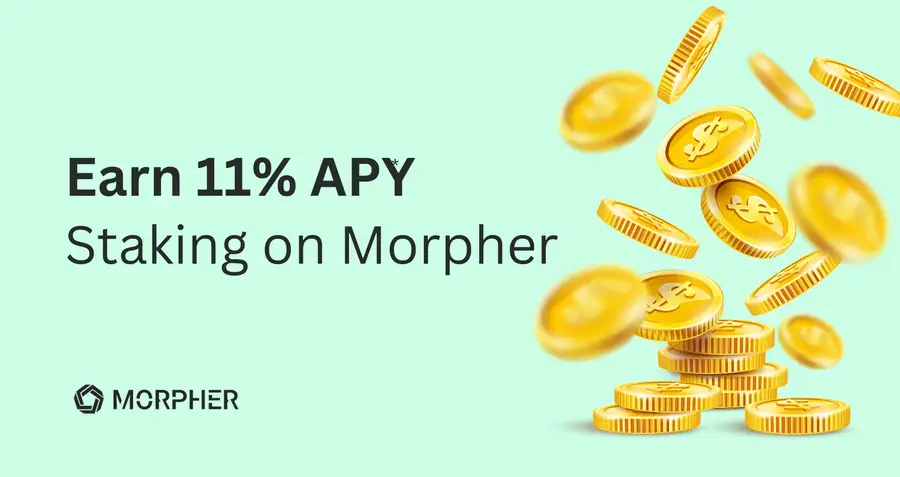
For years, the crypto world has been synonymous with sky high returns and unfortunately, equally high risks. It’s a thrilling ride, but not everyone has the stomach for the volatility that comes with chasing gains in an unpredictable market. But what if there were a safer alternative?
The answer lies in staking, a blockchain based strategy that allows you to earn steady rewards by simply committing your tokens to work. Unlike high risk trading or speculative investments, staking offers a balanced approach, perfect for those who value consistency over constant market drama.
That’s why we’ve introduced Morpher Savings: a staking solution that combines the best of blockchain innovation with the reliability of traditional savings. Designed to offer an 11% APY, it’s the perfect way to earn steady returns without taking unnecessary risks.
In this guide, we’ll break down what staking is, how it works on Morpher, and why it might just be the low-risk alternative you’ve been searching for in the crypto space.
Staking vs. Idle Funds
Staking, in simple terms, is like earning interest on money you park in a savings account. But instead of depositing dollars in a bank, you're locking up your crypto in a blockchain network to support its operations and security. In return, you earn rewards. Kind of like a thank-you from the network.
| Feature | Not Staked (Crypto Sitting Idle) | Staked on Morpher (11% APY) | Traditional Bank Savings (3% APY) |
|---|---|---|---|
| Potential Growth | None, unless crypto value rises constantly | Guaranteed APY of 11% in MPH tokens | Modest growth of 1-3% APY |
| Liquidity | Available per request | Locked for 30 days | Typically locked monthly or yearly, with withdrawal penalties |
| Minimum Deposit | No minimum | No minimum | Varies, often requiring $500–$1,000 |
| Risk | Subject to crypto price volatility | Denominated in MPH | Minimal, denominated in fiat |
Why Keeping Money Still Costs You
Leaving your money idle, whether in a traditional savings account earning negligible interest or as stacked in your drawer, means you're losing purchasing power over time. Inflation erodes the value of money year after year. For example, a €1,000 cash balance today might only buy goods worth €950 next year, depending on inflation rates.
Even traditional bank savings accounts offering a 3% APY often fail to keep up with inflation, which has averaged 4–6% in recent years. This means your “growth” in those accounts can still result in a net loss of real value.
Morpher’s Staking: Can You Make Money from It?
Morpher offers its unique staking option through the Morpher Savings account, providing users a simple way to earn 11% APY on staked MPH tokens. Here’s how it works:
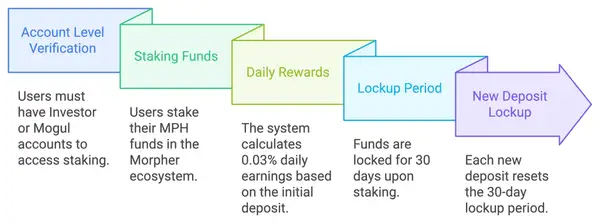

While Morpher already offers zero commission trading to eliminate hidden costs for investors, staking takes it a step further. It allows you to grow your holdings with guaranteed returns, making your money work for you even when you’re not actively trading.
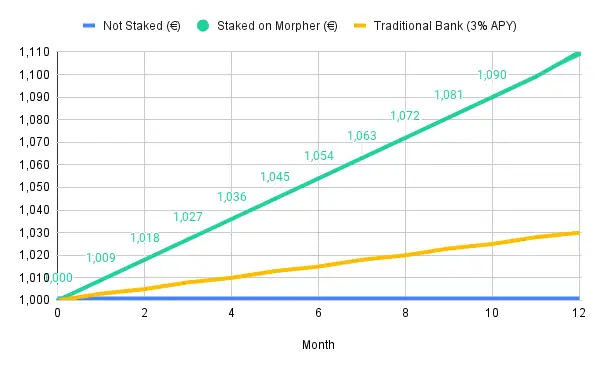
What About Risks?
Staking on Morpher offers a reliable way to earn 11% APY in MPH tokens, but it’s important to note that MPH’s value can fluctuate, reflecting the dynamic nature of crypto markets. Despite this, staking ensures steady token rewards, helping you grow your holdings over time. Find more information on MPH and Morpher Tokenomics here.
Rewards are paid in MPH, not fiat, and staked funds are locked for 30 days—features that promote stability and encourage a focus on long-term growth.
Why Morpher Staking Makes Sense
While all investments come with risks, staking on Morpher offers a unique combination of benefits that stand out in the crypto world. For starters, the 11% APY provides a consistent and reliable return, regardless of short-term market fluctuations. This makes it a compelling choice for those looking to grow their holdings without the stress of daily trading.
Morpher’s approach to staking is also refreshingly simple. There’s no minimum deposit, the process is straightforward, and your earnings are guaranteed in MPH tokens. Whether you're an experienced crypto investor or someone just exploring the space, Morpher Savings offers a low-risk way to start earning passive income in a dynamic ecosystem.
And if you're an active trader? Morpher’s zero commission trading ensures that whether you’re staking or trading, you’re always getting the most value from your investments.
Not you, let your money do the work
Morpher’s staking option is your gateway to effortless crypto growth. With 11% APY, a simple setup, and a seamless fit into the Morpher ecosystem, it’s designed for those who want reliable returns without the hassle.
Ready to put your crypto to work? Start Staking on Morpher Today.

Disclaimer: All investments involve risk, and the past performance of a security, industry, sector, market, financial product, trading strategy, or individual’s trading does not guarantee future results or returns. Investors are fully responsible for any investment decisions they make. Such decisions should be based solely on an evaluation of their financial circumstances, investment objectives, risk tolerance, and liquidity needs. This post does not constitute investment advice.

Painless trading for everyone
Hundreds of markets all in one place - Apple, Bitcoin, Gold, Watches, NFTs, Sneakers and so much more.

Painless trading for everyone
Hundreds of markets all in one place - Apple, Bitcoin, Gold, Watches, NFTs, Sneakers and so much more.






